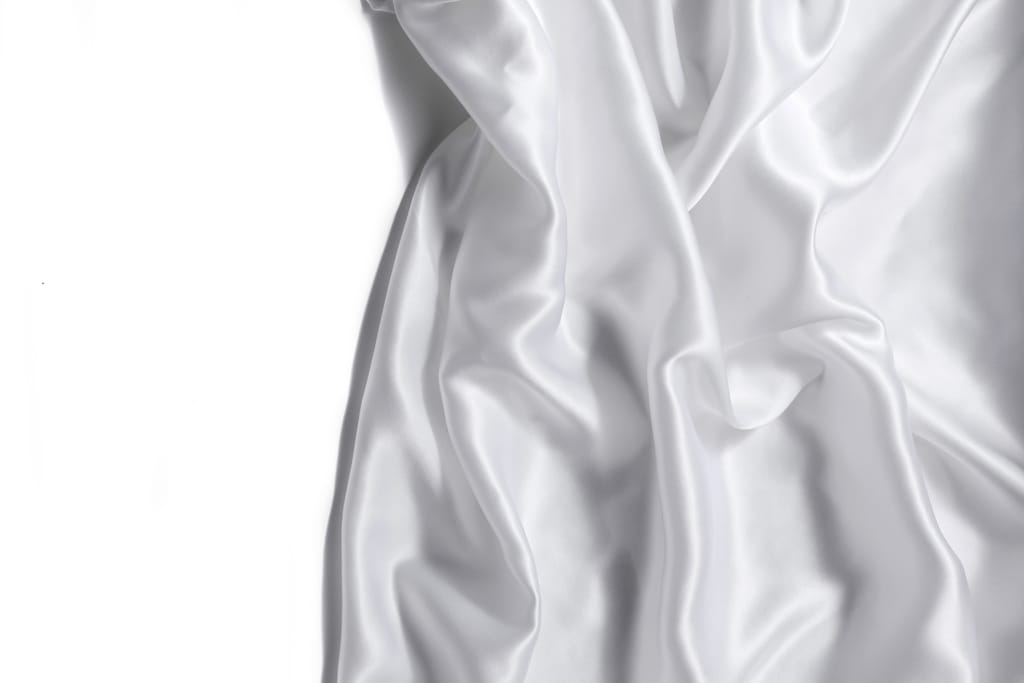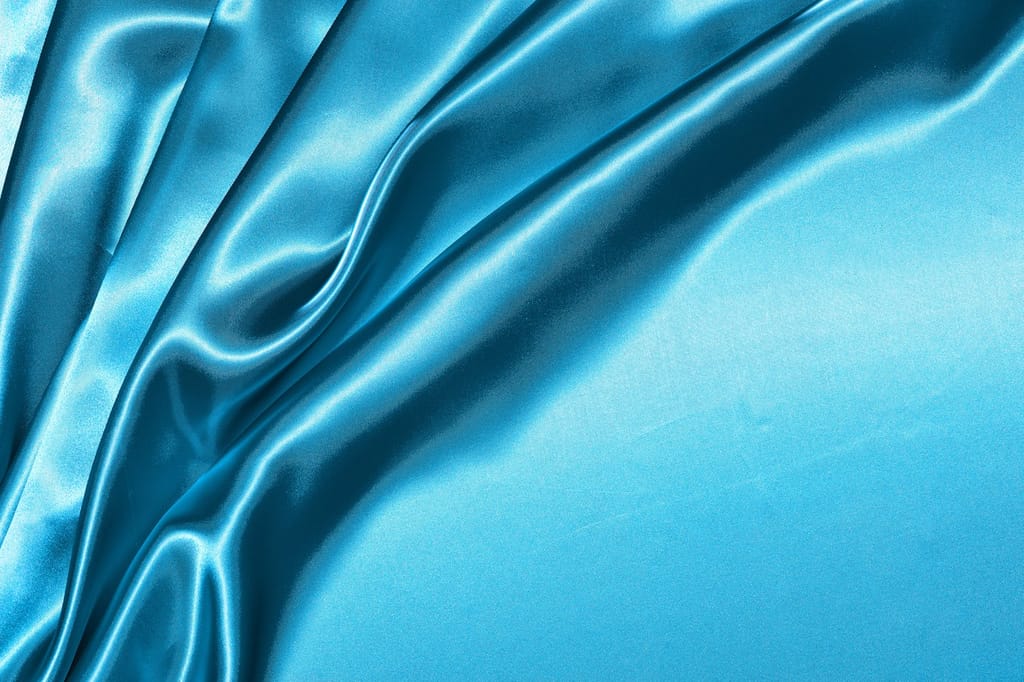How silk is made
Silk has long been a luxurious and sought-after fabric, and the process of making it is fascinating. The material is derived from the cocoon of the silkworm, a species of moth, and is made through a complex process of cultivation and harvesting, and then spinning the silk.
Growing silk
Silk is a luxurious material produced by the mulberry silkworm which is a particular species of the Bombyx Mori moth. The process begins with the breeding of silkworms. Silkworms feed exclusively on the leaves of mulberry trees, and they must be kept in carefully controlled conditions. They must be kept at a specific temperature and humidity, and they must be fed a steady supply of mulberry leaves. Once the silkworms are mature, they create a cocoon made of a single thread of raw silk.
The cocoons are then harvested and the raw silk is extracted from the cocoons by reeling. Reeling is the process of unwinding the raw silk from the cocoon. The cocoons are placed in hot water which softens the sericin, a protective protein coating that binds the silk filaments together. The softened sericin is then brushed away, and the continuous filament of raw silk is wound onto a reel. This raw silk is then spun into yarn and woven into fabric.
Silk can also be dyed in a variety of colors. The silk is first boiled in a dye bath and then soaked in a mordant, which is a chemical that helps the dye adhere to the fabric. The silk is then dried and the color is set.

Making silk fabric
Silk fabric is a luxurious and delicate material created through a complex process that involves harvesting silkworms, extracting the raw silk from the cocoon, and spinning the fibers into yarn.
The first step in the process of making silk fabric is harvesting silkworms. The silkworms are bred and fed mulberry leaves for several weeks until the worms are ready to begin spinning their cocoons. Once the cocoons are spun, they are then collected and boiled in hot water to kill the silkworm pupa inside.
The second step is extracting the raw silk from the cocoon. This is done by carefully unwinding the cocoon and carefully removing the long, continuous thread of silk. This raw silk then needs to be stretched and dried.
The third step in the process is spinning the silk fibers into yarn. This is done by tying the end of the raw silk thread to a hook, and then twisting the strands to create a single, continuous strand of yarn. This yarn is then wound onto a spool or bobbin to create a hank or skein of yarn.
The fourth step is to weave the silk yarn into fabric. This is done on a loom, where the yarn is threaded through the warp threads of the loom and then woven together, creating a fabric. The fabric is then wound onto a roll and sent to be bleached and dyed, depending on the desired color of the fabric.

Silk farming
The silk farming industry is an important part of the global economy, providing a range of products to the textile industry. Silk farming has a long history, dating back to the ancient Chinese dynasties. The Chinese perfected the process of raising silkworms and harvesting their cocoons to produce silk thread. This process was then spread to other parts of the world, including India and Europe.
Today, silk farming is a multi-billion dollar industry, with China, India, and Japan leading the way in production. Silk farming is a complex process. It begins with the breeding of silkworms, which are then fed with mulberry leaves. The worms then spin cocoons, which are harvested and the silk thread is extracted. The silk thread is then woven into fabric, which is then dyed and finished. The environmental impacts of silk farming are a major concern.
Silk farming requires large amounts of water, and can contribute to water pollution if not properly managed. Silk farming can also have negative impacts on local ecosystems due to the use of pesticides and fertilizers.
From an economic standpoint, silk farming can have a positive impact in some regions. It can create employment opportunities for people in rural areas, and provide an important source of income for farmers. In addition, the silk industry is a major source of foreign exchange for many countries.
Benefits of silk
Silk is a strong and durable fabric. It is naturally resistant to wrinkles and can be easily washed without losing its shape or texture.
Silk is hypoallergenic, making it an ideal choice for people with sensitive skin. Silk is also very lightweight, making it a great choice for clothing. It is comfortable to wear and can be easily layered with other fabrics.
Silk is also breathable, which allows it to keep the wearer cool in warm temperatures and warm in cool temperatures. This makes it a great choice for all-season wear.
Silk is a natural insulator, helping to retain body heat in cold temperatures. It also retains up to 30% of its weight in moisture, making it ideal for humid climates.
Silk is known for its soft and luxurious feel. It can be used on its own or blended with other fabrics to create unique garments.
Silk is an Eco-friendly fabric. It is biodegradable and can be composted when it is no longer usable.

Types of silk
Silk is renowned for its beauty, strength, and softness, and is one of the most sought after fabrics in the world. However, there are many different types of silk, each with its own unique qualities and characteristics.
The most common type of silk is Mulberry silk, which is made from the cocoons of silkworms that feed solely on the leaves of the mulberry tree. This type of silk is renowned for its strength and durability, and is used in a variety of fashion and home furnishing applications. Mulberry silk is also known for its smoothness and luster, which makes it an ideal choice for garments and bedding.
Another type of silk is Tussah silk, which is made from the cocoons of wild silk moths that feed on a variety of plants other than the mulberry tree. This type of silk is coarser and less lustrous than mulberry silk, but is still quite soft and luxurious. It is often used in upholstery and drapery applications, as well as for creating handcrafted items such as quilts and scarves.
Finally, there is Peace silk, also known as Ahimsa silk. This type of silk is made from the cocoons of silkworms that are allowed to hatch and emerge from the cocoon before the silk is collected. It is a process that is gentler on the environment and is often used to create more ethically produced items. Peace silk is usually thicker and more textured than other types of silk, and is perfect for creating unique garments and home decor items.
Conclusion
Silk is an incredibly versatile material that has been used for centuries to create clothing, tapestries, and accessories. It is made from the cocoons of silkworms, which are reared on mulberry trees. In order to make silk, the cocoons are boiled and the silk thread is then unwound from the cocoons and woven into fabrics. Silk is a luxurious product that has been treasured for its beauty and strength for centuries, and is still popular today.
Reference
- Huggbees. (2020, July 27). How It’s Actually Made – Silk. YouTube. https://www.youtube.com/watch?v=0IT_MHNHIBQ
- M. (2019, October 28). How Is Silk Made? From Silkworm to Silk Fabric: The Secrets of Silk Production. Lalouette. https://lalouettesilk.com/blog/how-is-silk-made/
- M. (2021, October 27). How Is Silk Made? – SERC Online. https://serconline.org/how-is-silk-made/
- Ryan, S. (2019, September 28). How is Silk Made? And is it Humane? Greenopedia. https://greenopedia.com/wild-peace-silk/
- Wikipedia contributors. (2023, February 26). Silk. Wikipedia. https://en.wikipedia.org/wiki/Silk